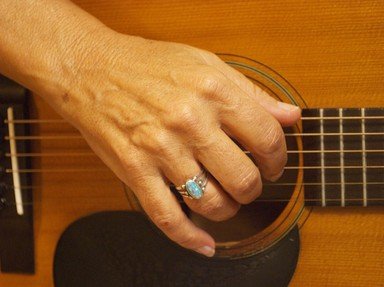Quiz Answer Key and Fun Facts
1. In 1958 a young Hispanic woman walked onto the stage of a coffeehouse in Cambridge, Massachusetts. Her singing served notice that she was to be the new queen of folk music. Who is she?
2. This woman was not a guitar player but she was accepted by the liberal-oriented folk music community because of the different style of music she brought with her and her civil rights activism. Who was the "Pata Pata" woman?
3. The fashionable term "roots musician" certainly applies to this woman who was born in Kentucky in 1922. In the 1930s she and her family sang what she learned years later was called 'hillbilly music'. Do you know her name?
4. This woman from Greenwich Village in New York City liked to 'fiddle around' with jug bands. Later she had a successful solo career at the oasis. Who is she?
5. She wondered where the time goes but it ran out too soon for her. Who was this British folksinger/songwriter who belonged to folk rock groups and sang solo?
6. A singer who sounds like she might be native-American is actually from Scotland. She brought many traditional Scot songs to America. Can you find the trail to her name?
7. A singer who some originally thought was from Africa was really from Alabama. Who was the woman sometimes referred to as "The Voice of the Civil Rights Movement"?
8. She had bleached blonde hair with bangs that frequently fell into her eyes. She was part of a legendary folk trio. What was her name?
9. Who wanted to "Send in the Clowns"? This woman did and it became one of her best-known songs. Do you know her identity?
10. She was a little late getting to the party; the folk music boom was winding down when she arrived from Canada. She probably didn't arrive in a big yellow taxi. Do you know who I mean?
Source: Author
CmdrK
This quiz was reviewed by FunTrivia editor
agony before going online.
Any errors found in FunTrivia content are routinely corrected through our feedback system.
